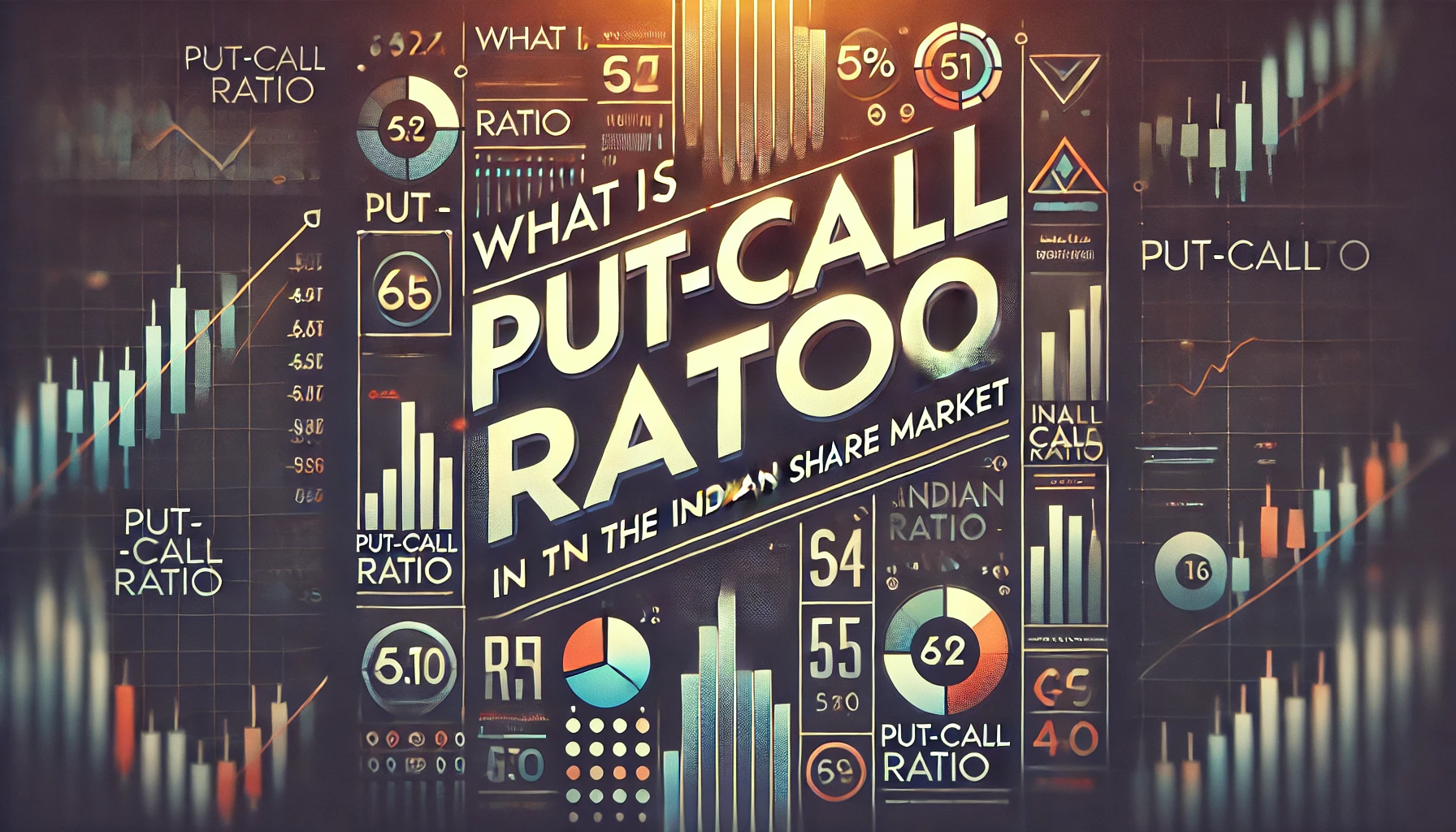In options trading, terms like “in the money” (ITM), “at the money” (ATM), and “out of the money” (OTM) often surface, especially when dealing with call options. Among these, OTM (Out of the Money) call options can be a powerful tool for traders looking for significant profits with limited risk.
This guide will focus on OTM call options in the Indian share market, explaining their characteristics, how they work, and why they can be an attractive strategy for investors. We’ll also dive into some historical examples and provide data to understand the impact of OTM options on trading outcomes.
What Are OTM Call Options?
An OTM (Out of the Money) call option refers to a call option whose strike price is higher than the current market price of the underlying asset. As a result, the option has no intrinsic value and only consists of time value. This means the option will not be profitable unless the market price of the underlying asset rises above the strike price before the expiration date.
Key Characteristics of OTM Call Options:
- Strike Price Above Market Price: The strike price of the call option is higher than the asset’s current price.
- No Intrinsic Value: Since the option is not profitable at the current market price, it has zero intrinsic value.
- Speculative Nature: OTM call options are highly speculative as they rely on the underlying asset’s price moving significantly higher to generate profits.
Example of OTM Call Option
To illustrate how an OTM call option works, consider the following example:
- Stock Price (Market Price): ₹500
- Call Option Strike Price: ₹550 (OTM)
- Option Premium: ₹10
- Expiration Date: 30 days
In this case, the ₹550 strike price is higher than the current ₹500 stock price, meaning the call option is out of the money. If the stock price remains below ₹550 until expiration, the option will expire worthless, and the trader will lose the premium paid (₹10).
However, if the stock price rises above ₹550 before expiration, the trader can exercise the option and make a profit. For example, if the stock price rises to ₹600, the trader will gain ₹50 per share minus the premium paid.
How Do OTM Call Options Work?
OTM call options work based on the time value of options and the anticipation of future price movements. Since OTM options have no intrinsic value, their value comes entirely from the potential for the stock price to rise in the future.
Here’s how they function in practical terms:
- No Intrinsic Value at Purchase: When an OTM call option is purchased, it does not have intrinsic value because the strike price is higher than the current market price. The only value the option holds is based on time until expiration and implied volatility.
- Bet on Price Increase: Traders who buy OTM call options believe that the underlying asset will increase in price before the option expires. The price needs to rise above the strike price for the option to become profitable.
- Time Decay: OTM call options experience time decay, meaning their value decreases as the expiration date approaches. If the underlying asset’s price doesn’t rise above the strike price, the option will expire worthless.
Why Trade OTM Call Options?
OTM call options are popular among speculative traders due to their relatively low cost and potential for high returns. Here are some reasons why traders choose to trade OTM call options:
- Low Cost: OTM call options are typically cheaper than ITM or ATM options since they have no intrinsic value. This low cost makes them an attractive option for traders looking to leverage their investment.
- High Return Potential: The payoff from OTM call options can be significant if the underlying asset’s price rises above the strike price. This provides a way to generate large profits from small initial investments.
- Leverage: OTM call options allow traders to control a large amount of the underlying asset with a relatively small amount of capital. This leverage can amplify profits if the trade goes in the right direction.
- Risk Management: The maximum loss on an OTM call option is the premium paid. This limited risk makes them appealing to traders who want to speculate without exposing themselves to significant losses.
Historical Data and Examples of OTM Call Options
To better understand how OTM call options perform in the Indian share market, let’s look at some historical examples:
Example 1: Reliance Industries OTM Call Option (June 2022)
| Date | Stock Price (₹) | Strike Price (₹) | Premium (₹) | Outcome |
|---|---|---|---|---|
| 1-June-2022 | 2,500 | 2,600 | ₹15 | OTM |
| 25-June-2022 | 2,650 | 2,600 | ₹70 | Profitable |
In this case, the stock price of Reliance Industries was ₹2,500 at the time the OTM call option was purchased. The strike price was set at ₹2,600, and the premium paid was ₹15. As the stock price rose to ₹2,650 by 25-June-2022, the option became profitable, generating a significant return.
Example 2: Nifty 50 OTM Call Option (December 2021)
| Date | Nifty 50 Price (₹) | Strike Price (₹) | Premium (₹) | Outcome |
|---|---|---|---|---|
| 1-Dec-2021 | 17,000 | 17,500 | ₹10 | OTM |
| 31-Dec-2021 | 17,600 | 17,500 | ₹120 | Profitable |
Here, a Nifty 50 OTM call option with a strike price of ₹17,500 was purchased when the index was trading at ₹17,000. The option was bought for a premium of ₹10. By the end of December, the Nifty 50 rose to ₹17,600, making the option highly profitable.
Risks Associated with OTM Call Options
While OTM call options offer high return potential, they also come with certain risks:
- Time Decay: As OTM call options approach expiration, their value declines due to time decay. If the underlying asset’s price doesn’t rise quickly enough, the option may lose all its value before expiration.
- High Probability of Expiry Worthless: OTM options have a higher likelihood of expiring worthless compared to ITM options. Since the strike price is higher than the market price, significant price movement is required for the option to become profitable.
- Volatility Dependence: OTM call options are highly sensitive to changes in implied volatility. If volatility decreases, the option’s price may decline, even if the underlying asset’s price doesn’t move.
- Speculative Nature: OTM call options are speculative instruments, often used by traders looking to profit from sharp price movements. However, this speculative nature means the risk of losing the premium paid is high.
Strategies Involving OTM Call Options
OTM call options can be part of various trading strategies designed to balance risk and reward. Some of the most common strategies include:
- Long OTM Call: In this strategy, a trader simply buys an OTM call option with the hope that the underlying asset’s price will rise significantly. This is a high-risk, high-reward strategy.
- Bull Call Spread: This strategy involves buying an OTM call option and simultaneously selling an even further OTM call option. This limits the potential profit but reduces the overall cost of the trade.
- Straddle Strategy: Traders use a straddle when they expect significant price movement in either direction. This involves buying both a call and a put option, one of which could be OTM, to capitalize on market volatility.
Conclusion
OTM call options are a versatile and speculative tool in the Indian share market, offering traders the potential for high returns with limited risk. Although they require significant price movement to become profitable, they provide traders with an affordable way to gain exposure to upward market trends. Understanding the mechanics of OTM call options, along with their risks and potential rewards, can help traders develop more effective strategies in the options market.
By studying historical data and examples, traders can make more informed decisions and better manage their OTM call option positions. Whether you’re looking to leverage market volatility or simply explore new opportunities, OTM call options can be a valuable addition to your trading toolkit.

What Is Implied Volatility?
In the realm of Indian share market derivatives, implied volatility (IV) plays a crucial role …

What is Margin Funding?
Margin funding is a powerful tool in the Indian share market that allows traders to …

Forward vs Future contract
In the Indian share market, derivatives such as forward and future contracts play a pivotal …

What is Margin Money?
Margin money is a crucial aspect of trading in the Indian share market, especially in …

What is Put-Call Ratio?
The Put-Call Ratio (PCR) is one of the most widely used indicators in options trading …

What is Derivatives?
Derivatives are financial instruments whose value is derived from an underlying asset or benchmark. In …

What is Cost of Carry?
The cost of carry is an essential concept in futures trading that reflects the cost …

What is futures
Futures are a fundamental part of derivatives trading in the Indian stock market. They allow …

Bullish Option Strategies
In the ever-evolving world of derivatives trading, options have become a powerful tool for investors …

Understanding Physical Settlement in Futures & Options Contracts: A Comprehensive Guide
In the world of derivatives trading, the concept of physical settlement has gained prominence, particularly …

what are call options
The Indian share market has expanded significantly over the years, attracting a growing number of …

What Is Credit Spread Strategy
In the world of options trading, the credit spread strategy is one of the most …

What Is a Forward Contract
A forward contract is a customized financial agreement between two parties to buy or sell …

Types of Derivatives in India
The Indian derivatives market has grown exponentially, becoming a vital tool for investors and traders …

What is Swaps Derivatives
In the world of derivatives, swaps are a special class of contracts that allow two …

Intrinsic Value and Time Value of Options
Options trading is one of the most widely used financial instruments in the Indian share …

What is Open Interest?
In the world of derivatives, the concept of “Open Interest” plays a crucial role in …

Types of underlying assets in derivatives
The Indian derivatives market has grown exponentially over the last few decades, thanks to its …

derivatives on Option Volatility & Pricing Strategies
The Indian share market derivatives segment is a dynamic environment where advanced traders rely heavily …

What is Futures Contract
The Indian share market offers various financial instruments that provide opportunities for investors and traders. …

What is implied volatility in options?
In the world of options trading, one of the most crucial elements to understand is …

Futures Pricing Formula
The Indian share market is known for its dynamic nature and offers various opportunities for …

What is an ITM Call Option?
The world of options trading is filled with technical terms that are crucial for investors …

What is Max Pain Theory?
The Indian share market is full of strategies and theories that traders use to predict …

What is OTM Call Options
In options trading, terms like “in the money” (ITM), “at the money” (ATM), and “out …

What Is Rollover
Rollover is a common term in the world of futures and derivatives trading, especially in …

Futures Prices Converge Upon Spot Prices
In the world of financial markets, futures contracts play a significant role. One of the …

Call Ratio Back Spread
In the Indian share market, advanced trading strategies such as the Call Ratio Back Spread …

Margin Call Meaning
A margin call is one of the most critical warnings in trading, often marking a …

What is Bermuda Option?
The financial markets are full of complex instruments, and one such tool is the Bermuda …


















